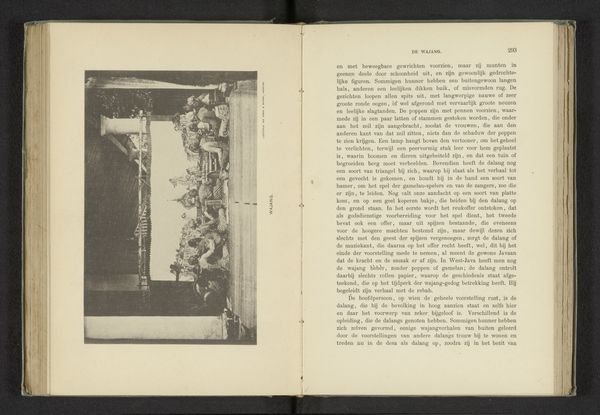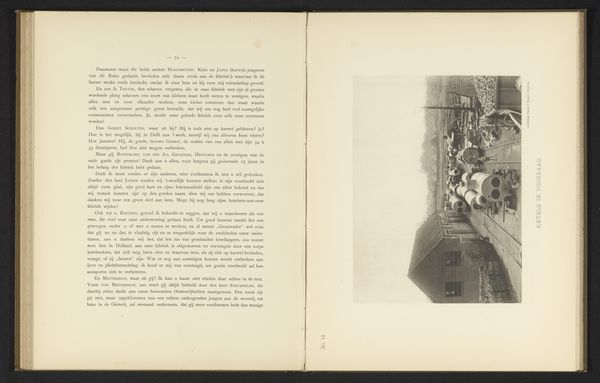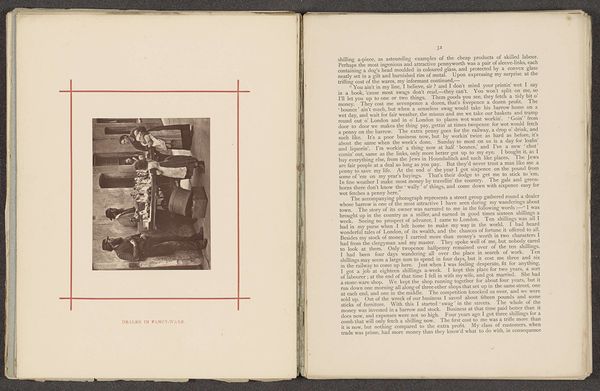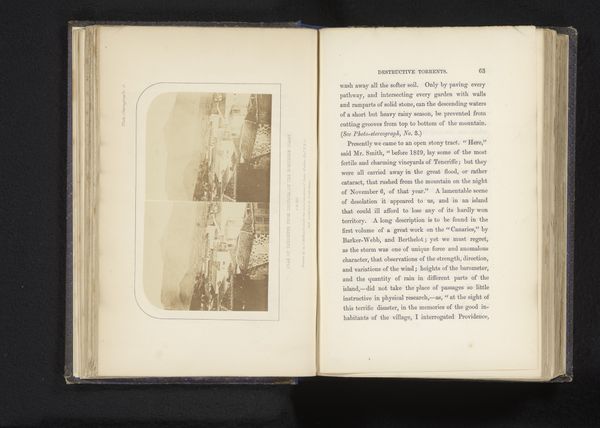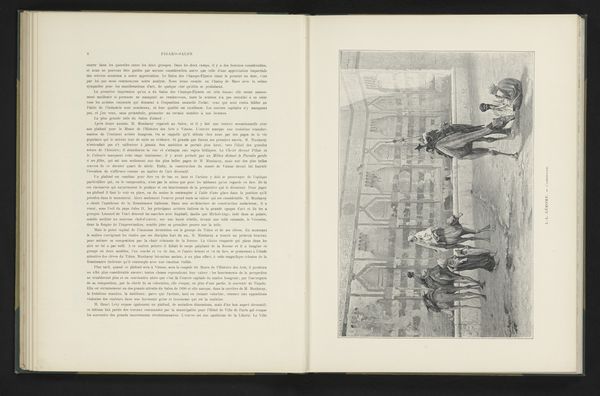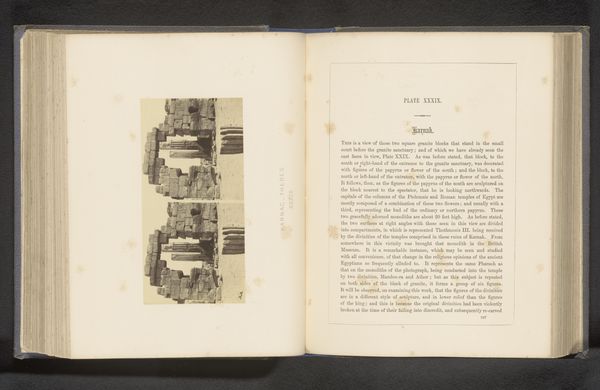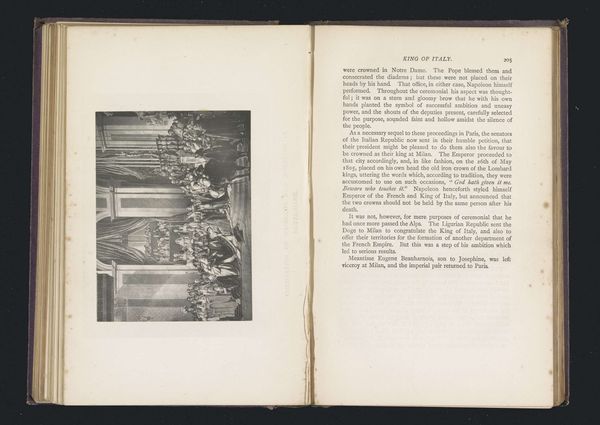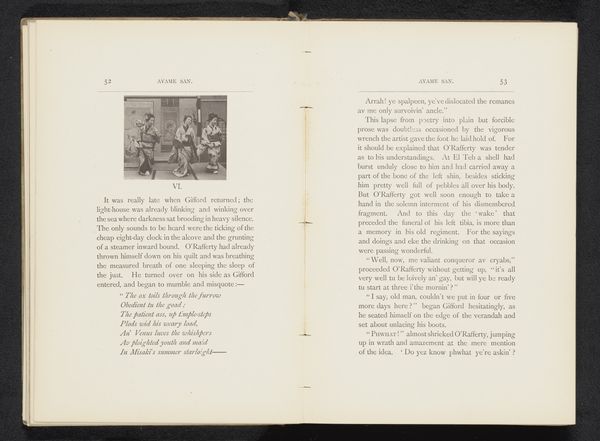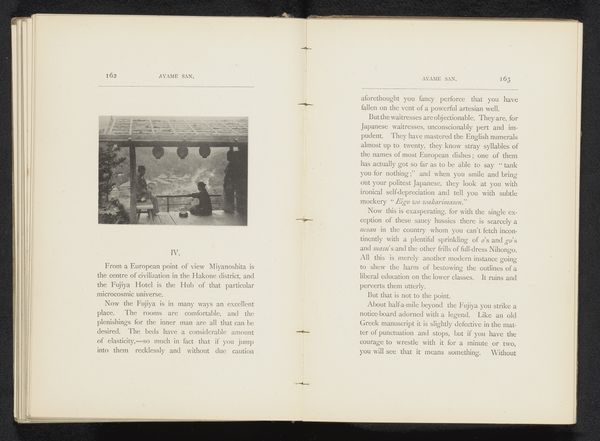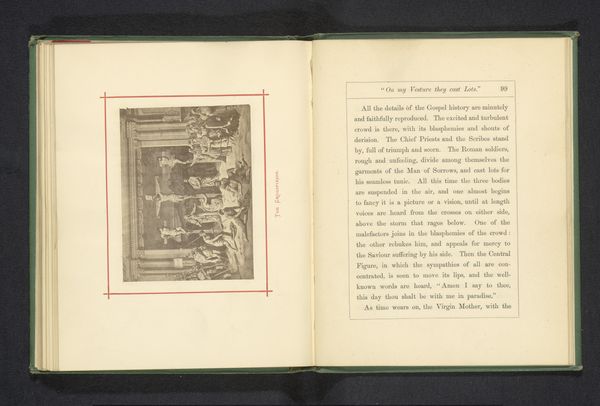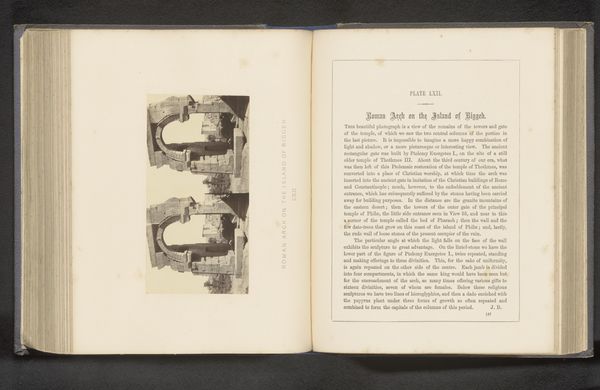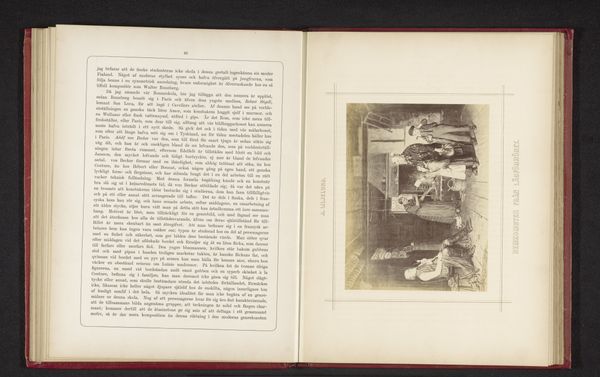
gelatin-silver-print, print, photography, gelatin-silver-print
#
gelatin-silver-print
# print
#
asian-art
#
photography
#
gelatin-silver-print
Dimensions: height 115 mm, width 168 mm
Copyright: Rijks Museum: Open Domain
Editor: I’m looking at "Groepsportret van Dajaks voor een huis op Borneo," a gelatin silver print from before 1894, currently housed in the Rijksmuseum. There's a definite air of posed formality about this group portrait. It also strikes me that their adornments, likely holding cultural importance, seem somewhat muted by the limitations of the photographic process. What aspects jump out at you? Curator: What I notice is how the very act of creating this photograph reinforces existing power dynamics. Think about it: a photographer, likely European, documenting the Dayak people in a way that conforms to colonial expectations of documenting indigenous populations. Editor: That’s a great point. The photograph then isn't just a neutral recording, but an active participant in shaping perceptions. Do you see any other traces of colonial influence in the image? Curator: Definitely. Consider the setting itself: 'before a house.' This detail, though seemingly innocuous, directs our gaze, creating a clear separation and, perhaps subconsciously, reinforces notions of "us" versus "them." We’re presented with a constructed version of reality, arranged for the viewer. Editor: It's easy to look past that constructed-ness when dealing with photographs of people from the 19th century, isn't it? I'm now curious about where this image was originally published and who its intended audience was. It seems like that knowledge would change how one experiences this artwork. Curator: Exactly! This image, and its probable function within illustrated publications of its time, circulated and confirmed particular racial narratives for the European consumer. These pictures, despite presenting themselves as neutral records, played an active role in supporting specific socio-political and cultural hierarchies. Editor: I had been taking the portrait as face value, but knowing its socio-political implications has definitely widened my view on it. Thanks for pointing those out. Curator: My pleasure! Seeing art as embedded in its social and historical context adds so many rich and important interpretive layers.
Comments
No comments
Be the first to comment and join the conversation on the ultimate creative platform.
